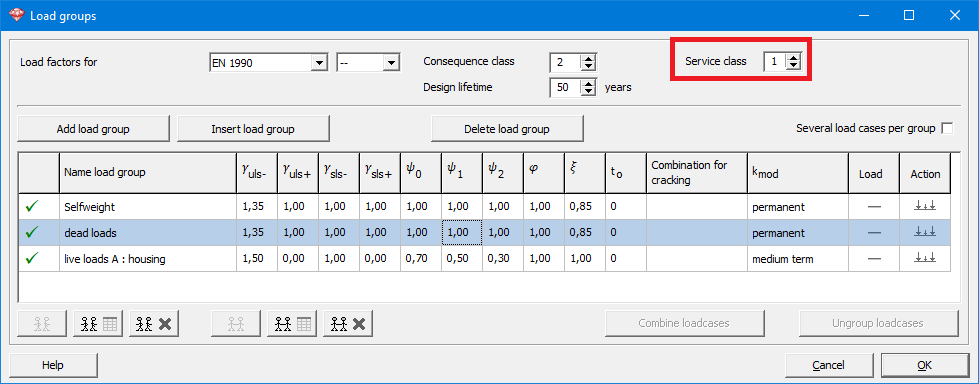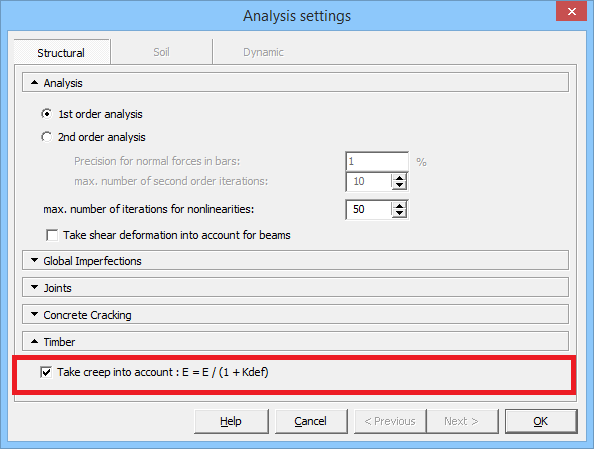To assess a structure (whether it is sufficiant or not), the following steps must be followed in sequence:
- Schematising the construction
- Determining the internal forces and moments (= global analysis)
- Checking the cross-sections (= design):
- Strength
- Stability
- Stiffness
In Diamonds
- In the Load groups dialog
 , define the correct Service class. The Service class is required to determine kmod.
, define the correct Service class. The Service class is required to determine kmod.

- Calculate the internal forces (syn. global analysis) F9 or
 .
.
Check the option to take the creep into account.
- Set the buckling lengths.
Don’t skip this step! Without the correct buckling lengths the stability results have no meaning. - Select the correct timber standard with Analysis > Timber standard.
- Click on F3 or
 to start the verification. The verification is supported for:
to start the verification. The verification is supported for:
- constant cross-sections with shapes:

- variable cross-sections with shape:

At the moment it is not possible to do a timber verification on H-shaped cross sections or composed cross-sections (Section Utility).
- constant cross-sections with shapes:
- View the results with
 . For the results of the strength check click
. For the results of the strength check click , for those of the stability check click
, for those of the stability check click .
.
The results of the strength and stability check are displayed as a percentage of the total capacity (= 100%) of the section.- A structure is sufficient for strength, if the percentage is less than 100% for all bars.
- A structure is sufficient for stability, if the percentage is less than 100% for all bars.
Based on the percentage no judgment can be made on the extent to which a section is sufficient or not. This is because the used formulas are not always linear.
- Don’t forget to verify the stiffness! Thus the vertical and horizontal deformation.

